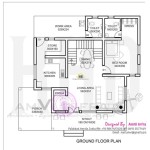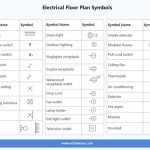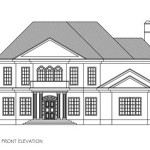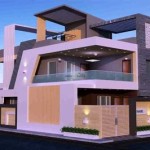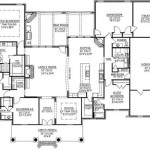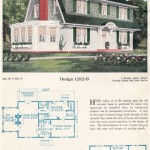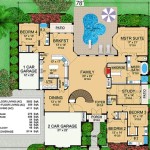Cottage Style Beach House Plans: Designing Your Coastal Retreat
Cottage style beach house plans represent a harmonious blend of charm, functionality, and coastal aesthetics. These designs are characterized by their emphasis on relaxed living, natural light, and seamless integration with the surrounding environment. Understanding the key elements and considerations involved in cottage style beach house plans is crucial for creating a comfortable and visually appealing coastal haven.
The allure of a cottage style beach house lies in its ability to evoke a sense of tranquility and connection to nature. These homes are often designed to maximize views, promote indoor-outdoor living, and withstand the challenges of a coastal climate. From the initial conceptualization to the final construction, careful planning and attention to detail are essential for realizing the full potential of a cottage style beach house.
Selecting the right plan involves considering factors such as lot size, orientation, building codes, and personal preferences. A well-designed cottage style beach house should not only meet the practical needs of its occupants but also reflect their individual style and create a welcoming atmosphere.
Key Design Elements of Cottage Style Beach Houses
Cottage style beach houses are distinguished by several characteristic design elements that contribute to their overall aesthetic and functionality. These elements are often inspired by traditional cottage architecture, adapted to suit the unique demands of a coastal environment. The choice of materials, the layout of the interior spaces, and the incorporation of outdoor living areas are all crucial aspects of cottage style beach house design.
One defining feature is the use of natural materials, such as wood, stone, and shingle siding. These materials not only provide durability and weather resistance but also contribute to the home's rustic and organic charm. Shiplap siding, both interior and exterior, is a very common design element that adds texture and visual interest. The use of reclaimed materials is also a popular option, adding character and contributing to sustainable design practices.
Another important aspect is the emphasis on natural light. Large windows, skylights, and open floor plans are used to maximize the amount of sunlight that enters the home, creating a bright and airy interior. Transoms above doors and strategically placed windows can also illuminate hallways and other traditionally darker areas.
The color palette typically consists of soft, muted tones that mimic the colors of the sea and sand. Whites, blues, greens, and grays are commonly used, creating a calming and relaxing atmosphere. Accent colors can be incorporated through furnishings and decor, adding pops of personality and visual interest.
Outdoor living areas are an integral part of cottage style beach house design. Decks, porches, and patios provide spaces for relaxation, entertaining, and enjoying the coastal scenery. These areas are often furnished with comfortable seating, outdoor dining tables, and grills, creating extensions of the interior living spaces. The incorporation of features such as outdoor showers and foot washes can also enhance the functionality and convenience of these outdoor areas.
Architectural details such as gabled roofs, dormers, and decorative trim further enhance the charm and character of cottage style beach houses. These details add visual interest and create a sense of warmth and authenticity. The use of window boxes and climbing plants can also add to the home's curb appeal and create a connection to the surrounding landscape.
Interior layouts tend to be open and informal, emphasizing casual living and easy flow between rooms. Kitchens are often designed as the heart of the home, with ample counter space, storage, and seating for gathering. Living rooms are typically cozy and inviting, with comfortable furniture and fireplaces or wood-burning stoves for added warmth.
Considerations for Coastal Construction
Building a beach house presents unique challenges due to the harsh coastal environment. Factors such as saltwater corrosion, high winds, and flooding must be carefully considered during the design and construction process. Selecting appropriate materials and employing proper construction techniques are crucial for ensuring the longevity and durability of the home.
One of the primary concerns in coastal construction is saltwater corrosion. Saltwater can damage and corrode many common building materials, including metal, concrete, and wood. To mitigate this risk, it is essential to use corrosion-resistant materials such as stainless steel, pressure-treated lumber, and specialized coatings. Proper ventilation and drainage can also help to reduce the buildup of moisture and prevent corrosion. The selection of roofing materials is also important, with options like asphalt shingles, metal roofing, and cedar shakes being popular choices depending on local climate and aesthetic preferences.
High winds are another significant challenge in coastal areas. Beach houses must be designed to withstand strong winds and potential impacts from wind-borne debris. This can be achieved through the use of reinforced framing, hurricane-resistant windows and doors, and proper anchoring. The roof is particularly vulnerable to wind damage, and special attention should be paid to its design and construction. Straps and clips can be used to secure the roof to the walls, and the overhangs should be minimized to reduce wind uplift.
Flooding is a common occurrence in coastal regions, and beach houses must be designed to mitigate the risk of flood damage. This can be achieved through several strategies, including elevating the house above the base flood elevation, using flood-resistant materials, and designing for breakaway walls. Elevating the house on pilings or stilts is a common practice in flood-prone areas, allowing floodwaters to pass underneath the building without causing damage. Breakaway walls are designed to collapse under the force of floodwaters, preventing the water from exerting excessive pressure on the foundation.
Building codes in coastal areas often have specific requirements for construction in flood zones and high-wind areas. It is essential to consult with local building officials and engineers to ensure that the design and construction of the beach house comply with all applicable regulations. These codes are designed to protect the safety of occupants and minimize the risk of damage from natural disasters. Understanding these building codes early in the planning process is critical.
Site selection is also a crucial consideration for coastal construction. The location of the beach house relative to the shoreline, dune systems, and other natural features can significantly impact its vulnerability to coastal hazards. Building on elevated sites or behind protective dune systems can help to reduce the risk of flooding and erosion. It is also important to consider the potential impacts of sea-level rise and climate change when selecting a site for a beach house.
Adapting Cottage Style to Beach House Living
Adapting cottage style to beach house living involves carefully considering the unique characteristics of the coastal environment and incorporating design elements that enhance comfort, functionality, and aesthetic appeal. This includes everything from selecting durable and weather-resistant materials to designing layouts that maximize natural light and promote indoor-outdoor living. The goal is to create a space that seamlessly blends the charm of cottage living with the relaxed vibe of a beachside retreat.
One key adaptation is the use of durable, weather-resistant materials. In addition to choices already mentioned, composite decking is a great choice which is specifically designed to withstand the harsh coastal elements. It is resistant to rot, decay, and insect damage, and it requires minimal maintenance. Metal roofing is another durable option that can withstand high winds and saltwater corrosion. When selecting windows and doors, it is important to choose impact-resistant glass and corrosion-resistant hardware and durable frames. Vinyl windows are an excellent choice for coastal homes, as they are resistant to moisture and UV damage.
The layout of the beach house should be designed to maximize natural light and promote cross-ventilation. Open floor plans are ideal for creating a bright and airy interior, and large windows and sliding glass doors can provide stunning views of the ocean. Strategically placed windows and skylights can also help to reduce the need for artificial lighting, saving energy and creating a more sustainable home.
Indoor-outdoor living is an essential aspect of beach house design. Decks, porches, and patios provide spaces for relaxation, entertaining, and enjoying the coastal scenery. These areas should be designed to blend seamlessly with the interior living spaces, creating a cohesive and inviting environment. Outdoor furniture should be durable and weather-resistant, and it should be comfortable and functional.
Storage is another important consideration for beach house living. Beach houses often serve as vacation homes or rental properties, and it is important to provide ample storage space for both occupants and their belongings. Built-in shelving, closets, and cabinets can help to maximize storage space and keep the home organized. Outdoor storage sheds or garages can also be used to store beach gear, lawn equipment, and other items.
Interior design choices should reflect the relaxed and casual vibe of beach living. Light and airy fabrics, natural textures, and coastal-inspired artwork can help to create a welcoming and comfortable atmosphere. The use of nautical accents, such as rope details, seashells, and ship models, can add to the home's coastal charm. Flooring choices should be durable and easy to clean. Tile, hardwood, and luxury vinyl plank are popular options for beach houses, as they are resistant to moisture and wear and tear.
Landscaping can also play a significant role in enhancing the appeal of a cottage style beach house. Native plants are well-suited to the coastal environment and require minimal maintenance. Drought-tolerant plants are also a good choice, as they can withstand the dry conditions that are often found in coastal areas. The use of landscaping to create privacy and shade can also enhance the comfort and enjoyment of outdoor living areas.

Cottage Style House Plan 1 Beds Baths 569 Sq Ft 45 334 Plans

Coastal Style With 2 Bed Bath House Plans Small

Beach House Plan 1 Story Old Florida Style Coastal Home Floor Plans
:max_bytes(150000):strip_icc()/river-place_1_1-0db8a16001ad4d9db3758c24d5c2b764.jpg?strip=all)
Our Best Beach House Plans For Cottage

Beach House Plans Floor Designs Houseplans Com

Beach House Plan Old Florida Style Cottage Floor

Beach House Plan Old Florida Style Cottage Floor Plans

Beach House Plans Coastal Home The Plan

Beach Style House Plan 3 Beds 2 Baths 1697 Sq Ft 27 481 Houseplans Com

Beach Style House Plan 3 Beds 2 Baths 1484 Sq Ft 23 492 Eplans Com

